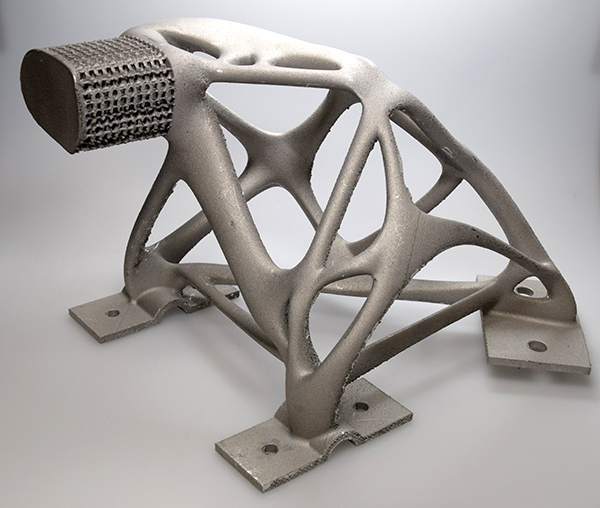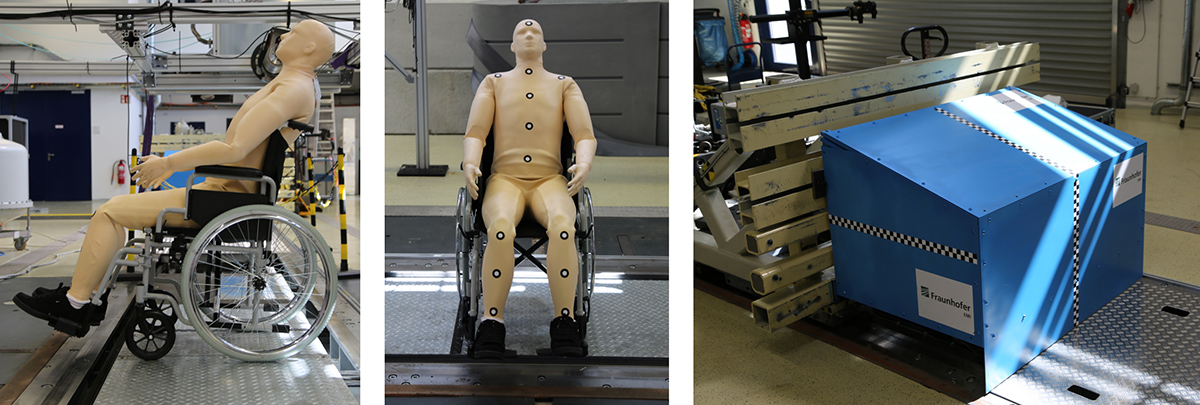Wheelcharity – we get wheelchair-user protection rolling!
The multi-member team of Wheelcharity was funded as part of the FastTrack initiative of Fraunhofer EMI. The objective of the project is to gain insights into crash behavior of wheelchair users (WCUs), to identify possible risks of injury and to point out optimization potentials and to test them exemplarily for application.
Higher mortality risk in road accidents for WCUs
Background: In case of a road accident, the mortality risk for WCUs is 36 percent higher than for pedestrians as is shown in a study by John D. Kraemer and Connor S. Beton from 2015 (BMJ Open). According to the “Global status report on road safety 2018” of the World Health Organization, road crashes resulted in 1.35 million deaths worldwide in a time range between 2000 and 2016, with Vulnerable Road Users (VRUs) accounting for more than half. WCUs are also part of the group of VRUs, but are rarely mentioned in statistics. Available data reveal that WCUs are exposed to an elevated risk in road accidents. The most common WCU accidents include collisions with motor vehicles, with the vehicle (car, truck, bus) usually colliding with the WCU without braking at inner-city intersections. The latest test methods by the European New Car Assessment Programme (Euro NCAP) for VRU safety consider adults and children without physical disabilities. Currently, it is not clear to what extent WCUs differ in vehicle collisions from healthy pedestrians with regard to kinematics, severity of injury and body regions of major stress. Differences in posture, head height and center of mass suggest certain variations, which have not been studied yet.
How does a WCU behave in crash compared to a pedestrian?
Part of the Wheelcharity project is the safety analysis based on the numerical simulation of the WCU-vehicle collision. To this end, the group Human Body Dynamics at Fraunhofer EMI uses 50th percentile male finite-element human body models as well as models representing the wheelchair and the car. A first comparative study was able to show that the movement pattern of the WCU differs significantly from the pedestrian. While the pedestrian bends around the vehicle front in a smooth motion, the WCU impact appears to be rather abrupt. It can be observed that, based on force values and values concerning the head-injury criterion (HIC), there is a higher head-injury risk for pedestrians than for WCUs, which is attributed to the more intense contact with the windshield. However, the HIC value does not take into account rotatory components that appear to be more relevant for the WCU based on the observed kinematics. To that end, the obtained data must be further evaluated in the future. Bone-fracture prediction based on strain limits shows that bone fractures are expected at more locations for the WCU than for the pedestrian, localized primarily in the hip and torso regions. The reason for this appears to be the additional contact with the wheelchair, the different posture and the lower center of mass, which causes the entire vehicle mass to act laterally on the WCU’s upper body via the wheelchair. To validate the collision behavior of crash test dummies and finite-element human-body models, it is common to use literature data from collision tests with donated bodies of deceased persons (post-mortem human subjects, PMHS). A limitation of the study is the lack of such a validation basis, as the necessary comparative data for WCUs are not available in the literature.


